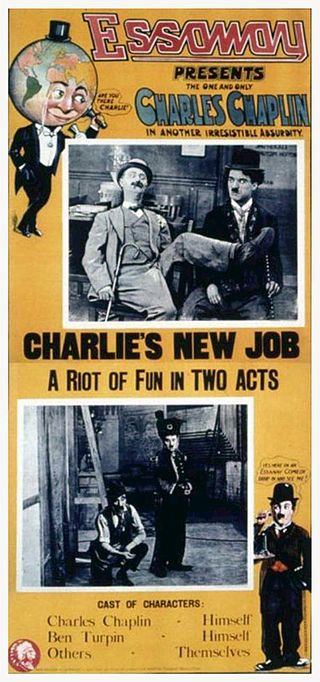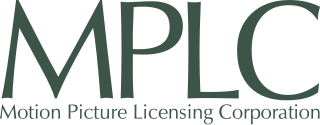
Digital cinema refers to the adoption of digital technology within the film industry to distribute or project motion pictures as opposed to the historical use of reels of motion picture film, such as 35 mm film. Whereas film reels have to be shipped to movie theaters, a digital movie can be distributed to cinemas in a number of ways: over the Internet or dedicated satellite links, or by sending hard drives or optical discs such as Blu-ray discs.

The Motion Picture Patents Company, founded in December 1908 and effectively terminated in 1915 after it lost a federal antitrust suit, was a trust of all the major US film companies and local foreign-branches, the leading film distributor and the biggest supplier of raw film stock, Eastman Kodak. The MPPC ended the domination of foreign films on US screens, standardized the manner in which films were distributed and exhibited within the US, and improved the quality of US motion pictures by internal competition. It also discouraged its members' entry into feature film production, and the use of outside financing, both to its members' eventual detriment.

35 mm film is a film gauge used in filmmaking, and the film standard. In motion pictures that record on film, 35 mm is the most commonly used gauge. The name of the gauge is not a direct measurement, and refers to the nominal width of the 35 mm format photographic film, which consists of strips 1.377 ± 0.001 inches (34.976 ± 0.025 mm) wide. The standard image exposure length on 35 mm for movies is four perforations per frame along both edges, which results in 16 frames per foot of film.

A movie theater or cinema, also known as a movie house, cinema hall, picture house, picture theater, the pictures, or simply theater, is a business that contains auditoriums for viewing films for public entertainment. Most are commercial operations catering to the general public, who attend by purchasing tickets.

A movie projector is an opto-mechanical device for displaying motion picture film by projecting it onto a screen. Most of the optical and mechanical elements, except for the illumination and sound devices, are present in movie cameras. Modern movie projectors are specially built video projectors.

Sony Pictures Entertainment Inc. is an American diversified multinational mass media and entertainment studio conglomerate that produces, acquires, and distributes filmed entertainment through multiple platforms. Through an intermediate holding company called Sony Film Holding Inc., it is operated as a subsidiary of Sony Entertainment Inc., which is itself a subsidiary of the Japanese multinational technology and media conglomerate Sony Group Corporation.

The Biograph Company, also known as the American Mutoscope and Biograph Company, was a motion picture company founded in 1895 and active until 1916. It was the first company in the United States devoted entirely to film production and exhibition, and for two decades was one of the most prolific, releasing over 3000 short films and 12 feature films. During the height of silent film as a medium, Biograph was the most prominent U.S. film studio and one of the most respected and influential studios worldwide, only rivaled by Germany's UFA, Sweden's Svensk Filmindustri and France's Pathé. The company was home to pioneering director D. W. Griffith and such actors as Mary Pickford, Lillian Gish, and Lionel Barrymore.

A projectionist is a person who operates a movie projector, particularly as an employee of a movie theater. Projectionists are also known as "operators".
A film distributor is a person responsible for the marketing of a film. The distribution company may be the same as, or different from, the production company. Distribution deals are an important part of financing a film.

Buena Vista Home Entertainment, Inc. is the home entertainment distribution arm of the Walt Disney Company. The division handles the distribution of Disney's films, television series, and other audiovisual content across digital formats and platforms.
A re-edited film is a motion picture that has been modified from the manner in which it was showcased in its original theatrical release. Reasons for this type of editing may range from the distributor's demands to accommodating different audience groups. Fan-made movie edits are often met with controversy, as they bring up issues of copyright law.

Trimark Pictures was an American production company that specialized in the production and distribution of television and home video motion pictures. The company was formed in 1984 by Mark Amin as Vidmark Entertainment with Vidmark Inc. established as the holding company. As a small studio, Trimark produced and released theatrical, independent, television and home video motion pictures. The logo features a triangle with a profile of a tiger's head.

The Chicago film industry is a central hub for motion picture production and exhibition that was established before Hollywood became the undisputed capital of film making. In the early 1900s, Chicago boasted the greatest number of production companies and filmmakers. Essanay Studios founded by George K. Spoor was one of the earliest successful studios to produce movies in Chicago, employing stars such as Charlie Chaplin and Gloria Swanson. Actor and co-founder of Essanay Studios, Broncho Billy Anderson gave birth to the western genre. Early film companies such as Essanay Studios produced multiple silent films every week and rented viewing equipment to showcase the latest cinematography to the public. This rental culture gave birth to the popularity of Nickelodeons up until the Great Depression. However, due to the high demand for motion pictures during this time, a black market for films and equipment developed. The Motion Picture Patents Company, established in 1909 as a conglomerate of the major studios, sought to eliminate all illegal use of patented film equipment. As a result, independent ventures entered the film scene. Independents drove the film industry to the west to avoid legal trouble with the trust of major film companies united under the Motion Picture Patents Company. The west offered fairer weather and scenery that better accommodated film making. Not until the 1980s and early 21st century has Chicago experienced a film production revival. Blockbusters, such as Blues Brothers, Sixteen Candles, and The Dark Knight, have rejuvenated the Chicago film scene.

Audiovisual (AV) is electronic media possessing both a sound and a visual component, such as slide-tape presentations, films, television programs, corporate conferencing, church services, and live theater productions.

Motion Picture Licensing Corporation ("MPLC") is a global, independent, non-theatrical copyright licensing company authorized by more than 4,000 motion picture and television copyright holders, such as studios and producers, to issue a public performance license, called the “Umbrella License” which allows the public performance of copyrighted motion pictures, television programs and other audiovisual works that were originally intended for personal use only. The federal Copyright Act provides copyright owners the exclusive right to control the performance of their works. The Umbrella License allows organizations, corporations, associations, and other groups and institutions to show legally obtained motion pictures, television programs, and other audiovisual content that are originally intended for personal, private, home use only, in locations outside of the home. MPLC rights holders include Hollywood studios as well as children's, faith-based, independent, television, special interest, and international producers.

Home video is recorded media sold or rented for home viewing. The term originates from the VHS and Betamax era, when the predominant medium was videotapes, but has carried over to optical disc formats such as DVD and Blu-ray. In a different usage, "home video" refers to amateur video recordings, also known as home movies.

A film, also known as a movie or motion picture, is a work of visual art that simulates experiences and otherwise communicates ideas, stories, perceptions, emotions, or atmosphere through the use of moving images that are generally accompanied by sound and other sensory stimulations. The word "cinema" is a shortening of the word "cinematography" and is used to refer to either filmmaking, the film industry, the overall art form, or a movie theater.
Virtual Print Fee (VPF) is a subsidy paid by a film distributor towards the purchase of digital cinema projection equipment for use by a film exhibitor in the presentation of first release motion pictures. The subsidy is paid in the form of a fee per booking of a movie, intended to match the savings that occurs by not shipping a film print. The model is designed to help redistribute the savings realized by studios when using digital distribution instead of film print distribution.

Columbia Pictures Industries, Inc. v. Redd Horne, Inc., 749 F.2d 154 was a copyright infringement case of the United States Court of Appeals for the Third Circuit over the playing video cassettes in-store of a video sale and rental store. The appeals court affirmed the decision of the district court to grant the plaintiffs' motion for summary judgment and enjoin defendants from exhibiting plaintiffs' copyrighted motion pictures.
Warner Bros. Entertainment v. WTV Systems is a 2011 copyright infringement case decided in United States District Court, C.D. California.















